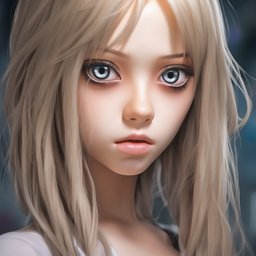
There are several libraries and approaches that attempt to achieve generalized object detection within a context, although creating a completely automatic, context-based object detection system without predefining objects can be a complex task due to the variability of real-world scenarios.
However, libraries and methodologies that have been utilized for more general object detection include:
1. YOLO (You Only Look Once): YOLO is a popular object detection system that doesn't require predefining objects in the training phase. It uses a single neural network to identify objects within an image and can detect multiple objects in real-time. However, it typically requires training on specific object categories.
2. OpenCV with Haar Cascades and HOG (Histogram of Oriented Gradients): OpenCV provides Haar cascades and HOG-based object detection methods. While not entirely context-based, they allow for object detection using predefined patterns and features. These methods can be more general but might not adapt well to various contexts without specific training or feature engineering.
3. TensorFlow Object Detection API: TensorFlow offers an object detection API that provides pre-trained models for various objects. While not entirely context-based, these models are designed to detect general objects and can be customized or fine-tuned for specific contexts.
4. Custom Object Detection Models with Transfer Learning: You could create a custom object detection model using transfer learning from a pre-trained model like Faster R-CNN, SSD, or Mask R-CNN. By fine-tuning on your own dataset, the model could adapt to specific contexts.
5. Generalized Shape Detection Algorithms: Libraries like scikit-image and skimage in Python provide various tools for general image processing and shape analysis, including contour detection, edge detection, and morphological operations. While not object-specific, they offer tools for identifying shapes within images.
Each of these methods has its advantages and limitations when it comes to general object detection. If you're looking for a more context-aware system that learns and adapts to various contexts, combining traditional computer vision methods with machine learning models trained on diverse images may be a step towards achieving a more generalized object detection system. However, creating a fully context-aware, automatic object detection system that adapts to any arbitrary context without any predefined objects is still a challenging area of research.
-----------------
In terms of computational requirements, here's a general ranking of the mentioned object detection methods based on the computational power and RAM they might typically require:
1. OpenCV with Haar Cascades and HOG:
- Computational Power Needed: Low to Moderate
- RAM Requirements: Low
- These methods are computationally less intensive compared to deep learning-based models. They can run on systems with lower computational power and memory.
2. Generalized Shape Detection Algorithms (scikit-image, skimage):
- Computational Power Needed: Low to Moderate
- RAM Requirements: Low to Moderate
- While these libraries might need slightly more computational power and RAM than Haar Cascades and HOG, they are still less demanding compared to deep learning-based models.
3. TensorFlow Object Detection API:
- Computational Power Needed: Moderate to High
- RAM Requirements: Moderate to High
- Running pre-trained models from the TensorFlow Object Detection API might require more computational power and memory compared to traditional computer vision methods due to the complexity of the deep learning models.
4. Custom Object Detection Models with Transfer Learning:
- Computational Power Needed: Moderate to High
- RAM Requirements: Moderate to High
- Training custom object detection models with transfer learning typically requires moderate to high computational power and memory, especially during the training phase.
5. YOLO (You Only Look Once):
- Computational Power Needed: High
- RAM Requirements: High
- YOLO models are relatively demanding in terms of computational power and memory. They require more powerful machines due to their deep neural network architecture and real-time processing capabilities.
The exact computational requirements and memory usage can vary based on the specific hardware, image sizes, complexity of the models, and the scale of the operations being performed. Deep learning models, in general, tend to demand more computational resources compared to traditional computer vision methods. If you're working with large datasets or real-time processing, more powerful hardware configurations would likely be necessary to achieve optimal performance.
--------
https://github.com/opencv/opencv/tree/master/data/haarcascades
--------
If your goal is to detect shapes without knowing the specific objects at first, OpenCV's contour detection methods combined with image processing techniques could be more appropriate than scikit-learn. Once shapes are identified, further analysis or categorization can be performed using traditional machine learning algorithms from scikit-learn or other methods.